I am at a busy corner that makes a sharp right turn in Jodhpur, India. Jodhpur is known as the “Blue City”, but as you make your way across it, you realise that there is not just blue but a riot of colour here. This is Rajasthan at its most spectacular. Autorickshaws and motorbikes are passing in both directions often at irresponsible speeds. I am pinned against a wall with no footpath. My feet are half on a tiny kerb and half in the road. My heart is thumping. I am more than a little concerned that I have made a rather stupid misjudgement. People are looking at me as if I have either lost my mind or have a death wish. Neither is true, I am here for a purpose: a photograph. Have I seen a photograph? Nope. I have seen the possibility of a photograph. The curve of the road, the colourful buildings, and a small staircase on the opposite side hint at the possibility of something interesting.
After a few minutes, people stop paying attention to me and the world does its own thing again. The traffic becomes becalmed. The rickshaws seem to come alone now. People walk by unconcerned about an errant vehicle squashing them. From the corner of my eye, I notice an old man walking in my general direction. Simply dressed, he walks with a cane. Ignoring everything else around him, he sits on the stairs opposite and begins to examine something in his possession. I take a few shots.
I check my screen to see the results. I know some frown on this practice, but I care not. I am unlikely to stand in this spot again, so I want to get my picture right. I am happy with the composition, but there is little of interest, so I wait. Three women walk into the scene and I raise my camera again, but before I can shoot an autorickshaw runs through my viewfinder, ruining any possibility of a picture. Damn it! I try again, firing a series of shots before another autorickshaw roars past and barely misses my toes. Did I get a shot? I am full of doubt but hopeful.
The old man across the road finally notices and looks up at me. I smile, wave, and cross the road. I spend a few minutes showing him the photographs I took of him. He seems quite happy and unbothered by me taking his photograph. We part with a smile and a nod.
I find a quiet spot and review my pictures. I appear to have got a single shot of value. This makes me happy. Later, when I can see the image on my laptop, I am delighted to find that I have caught the three women in motion, and they, with the seated old man, almost form a Nike “Swoosh” shape. Better yet, the three women all have their left foot forward, recalling John Lennon, Ringo Star, and George Harrison of the Beatles on the Abbey Road album cover. (The awkward other guy had his right foot forward.) When I return home, I shared the photograph on various social media platforms. It got a positive response, but not quite the world-shattering array of acclaim that I was hoping for. The imagined “best street photograph of the year” award never materialised. In hindsight, I realise that I had rather overestimated the value of my photograph. You, dear reader, can judge for yourself. It is the shot above entitled Jodhpur.
If I am honest, the experience was better than the photograph, but it is one that I think everyone who has photographed the street will share – that wonderful moment when you imagine a possibility and it comes to fruition. What I hope my anecdote shows is the potential for joy and satisfaction in street photography. In the rest of this article, I want to expand on why street photography, one of the hardest of photography’s genres to become competent in, can provoke such a reaction.
Pinning down the origins of street photography and nominating an individual as the first, like so many questions in photography’s history, is difficult. Good cases can be made for Frenchman Charles Nègre and Scotsman John Thompson. Perhaps, it can even be argued that street photography as we recognise it today began with Alfred Steiglitz’s magnificent 1893 image The Terminal. However, here I would like to consider an image by another well-known early pioneer, the great Eugène Atget.
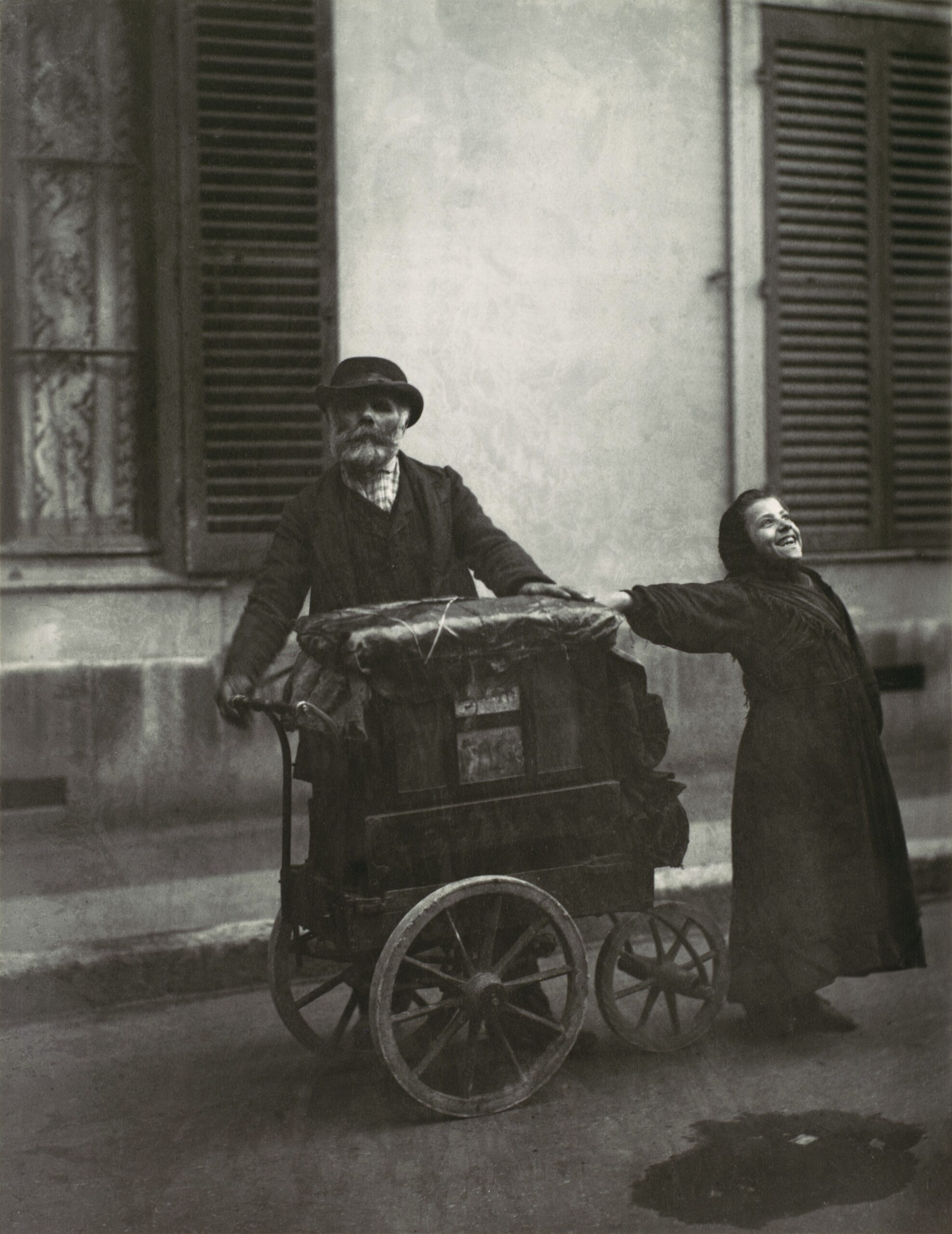
Atget’s image Street Musicians is a delight to behold. Most early photographs featuring human subject appear static and lacking in any dynamism. This is, of course, due to the prolonged exposure times that the technology of the day demanded. Subjects had to sit or stand still for much more than 1/60 of a second. The pose of the man, apart from his blurred right hand, reflects this. He appears to be holding steady for the camera. Whilst he might be the central figure in the photograph, he is not what makes it wonderful. It is the young woman, perhaps his daughter or granddaughter, on the right. Her expression, looking slightly upwards and embracing the wonders of the world, fills me with joy. She brushes aside the photographic norms of the time and makes this picture magical. One can only imagine Atget’s reaction when the picture emerged from the developing process. (For me, it varies between a self-satisfied nod of the head and “I’ve just scored the winner in the World Cup” on my knees slide across the kitchen floor before taking the adulation of my sadly mute laptop.) This picture sets a tone for the possibilities of what was to come from street photography. This image, within its modest dimensions, contains the future.
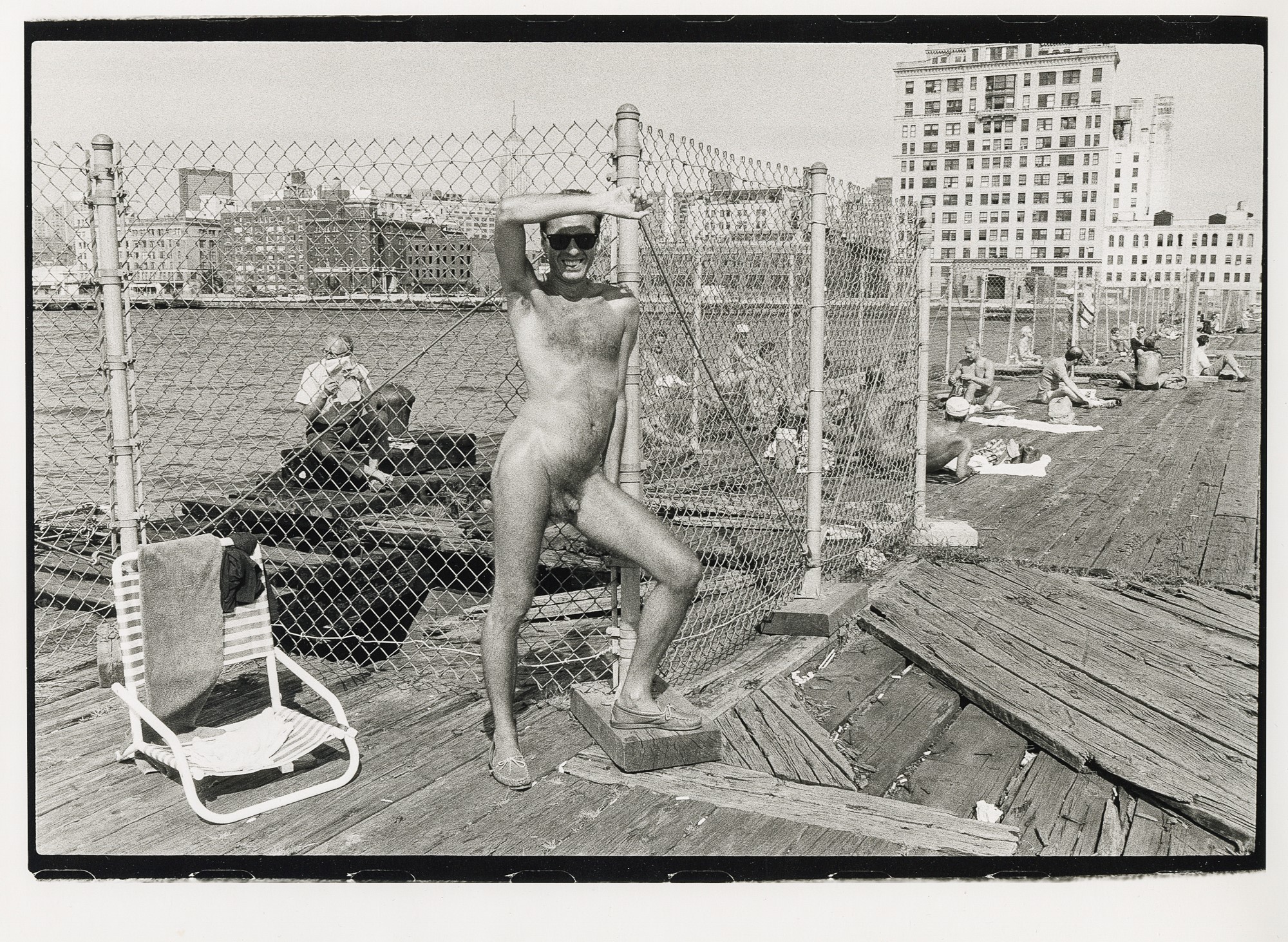
Occasionally, there are times when “WTF?” is your immediate response to an image. That is my reaction to Barbara Alper’s extraordinary On the Pier and I mean that in an entirely positive way. Alper, with a storied forty-year career behind her, is a successful and highly regarded documentary photographer based in New York. Alper grew up in Detroit before moving to Boston. There, inspired by photography made by friends, she took a few classes. She later took her portfolio to the MIT Creative Photo Lab. Upon seeing her portfolio, the department allowed her to audit their photography courses in return for lab work. After this, her career path was decided. She admits that she photographs anything and everything. Her work has been published widely and has featured in the LA Times, the New York Times, Newsweek, and multiple magazines. Still freelancing to this day, she has exhibited her work globally.
The image was taken on a New York pier that was a popular hangout with the gay community. Alper found it a fascinating place to wander and take pictures. None of the community minded and she was never harassed. On this occasion, she came across this gentleman, displaying all to the world, and asked if she could take his photograph. He was more than happy to oblige. I think it must take a particular level of self-confidence to allow yourself to be photographed naked in public!
The result is one of those images that encapsulates everything that great street photography should be. In my mind, I have added it to my list of favourite New York street photographs along with pictures such as Joel Meyerowitz’s image of a woman with a broken leg confronting two people dressed as giant shoes, or Garry Winogrand’s picture of people on a bench at the World’s Fair. It is funny, surprising, and a little shocking. It is also good hearted and humane. However, there is a serious message here. The naked man is not judged or humiliated by this photograph. His common humanity, in a time of rampant homophobia fuelled by the tragedy of the HIV/AIDS epidemic, is emphasized before us.
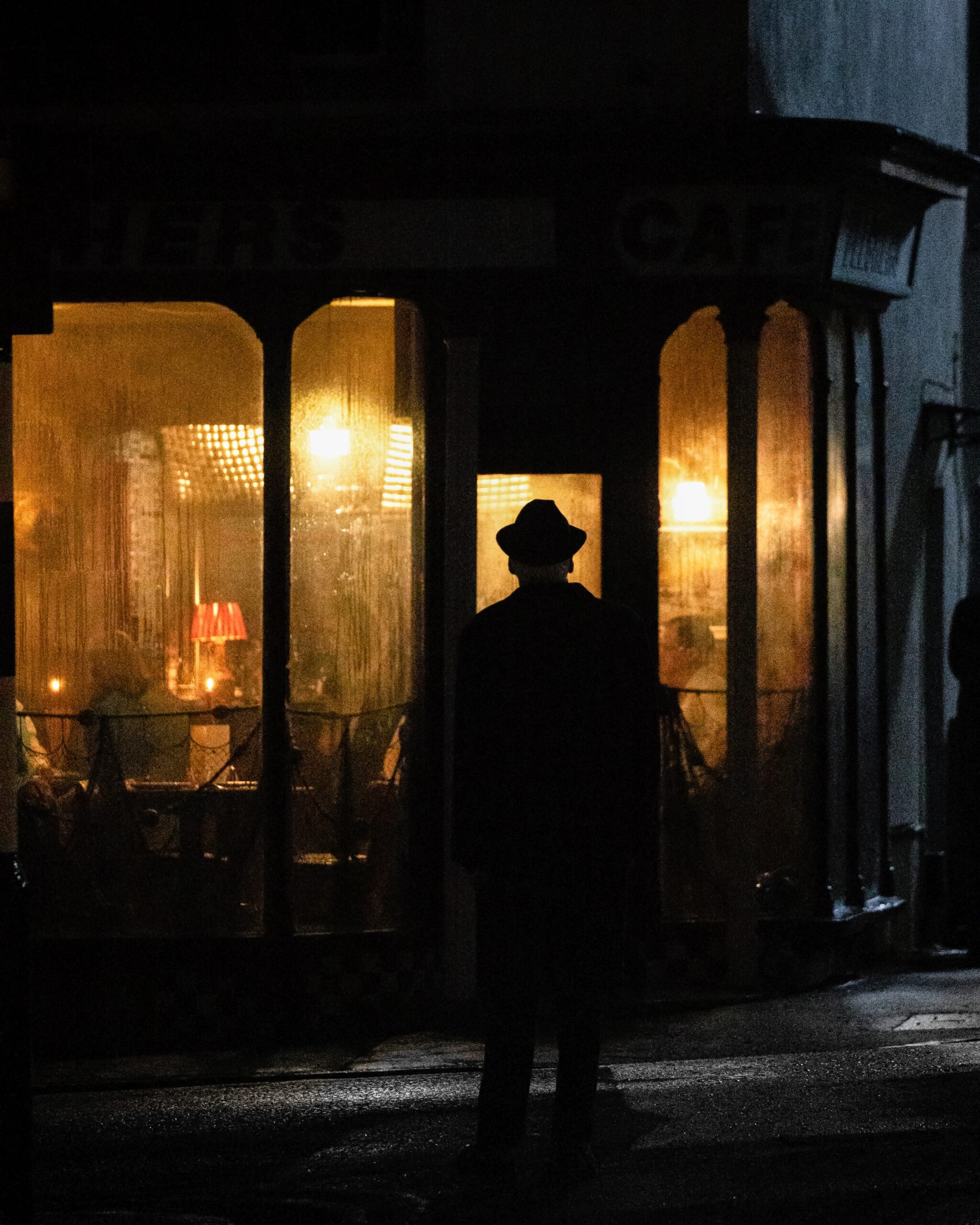
Andy Gardner’s Belcher’s Café is proof that making your children happy can bring you rewards beyond happy kids, a few days of good behaviour, and a peaceful life. Gardner is based in the UK’s south coast city of Brighton. He took up photography in 2015 and was instantly hooked. He is constantly trying his hand at new genres of photography including street, astrophotography, and architecture, but the primary focus of his work is capturing the beauty in the everyday world around us.
Gardner’s children were desperate to see Harry Styles, the pop star and actor, who was starring in a film being made in Brighton, so he took the children along to the set to watch the proceedings. He also took his camera and a telephoto lens. The filming was taking place inside the café, but Gardner was more interested in a man in a hat walking up and down the street outside. Focusing on the man, Gardner formed a mental plan, watched, and waited for a moment of serendipity. When he stopped outside the café and looked in, Gardner fired the shutter and created an image that he had visualised moments earlier.
The image he made is wonderful. It is a street image alive with possibilities and questions. Who is the man? Is he going to enter the café? Is he watching somebody in there? The photograph is both inviting and sinister depending on your perspective. The joy of what street photography can bring you is captured perfectly in this image: that fantastic moment when you see that possibility and it all comes together seamlessly.
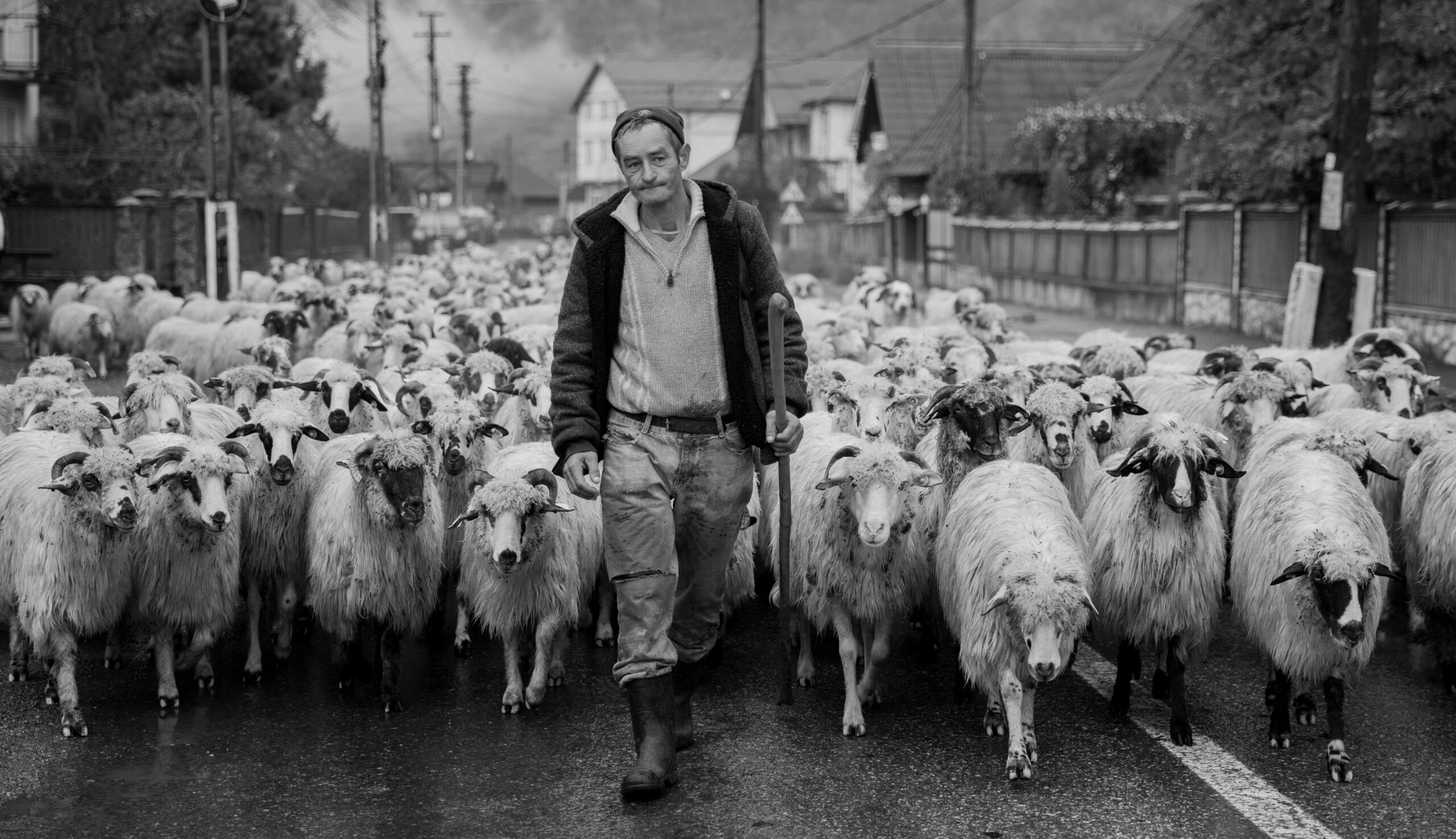
Mentally, I think we automatically associate street photography with big cities. I guess we are programmed to think of the Paris of Henri Cartier-Bresson and Robert Doisneau or the New York of Joel Meyerowitz and Garry Winogrand. There is no reason why this type of photography cannot be created in small towns. Here Daryl Ford’s Shepherd gives a wonderful illustration of the potential of street photography if we step outside of our regular citycentric thinking.
Ford, who after a horse racing apprenticeship became a blacksmith, now combines the smithing with a photography business that he runs in partnership with his wife Judy. Inspired by his fellow Devonian James Ravilious, a master of recording country life, he has spent many years documenting life in his local community.
Shepherd recalls Don McCullin’s brilliant image Sheep going to the Slaughter (1). McCullin’s image was taken in the early morning, the near darkness hinting at the immediate fate of the sheep. Ford’s image speaks of hope, tradition, and community. The shepherd is careworn, but he knows where he is going. He appears confident in his stride with his flock following along. It feels like this journey is a regular part of the day-to-day life in the region of northern Romania where the photograph was taken. Modernity has not overwhelmed everything, and life continues as normal. This is an outstanding picture that illustrates the immense value of keeping your eyes open and being patient when making images.
Street photography is a genre under pressure. As we have become more aware of issues such as representation and ethics in photography, this is a natural consequence. While it is correct to interrogate ourselves as photographers with regards to the images that we produce, it is also vital that we continue to recognise and celebrate the wonderous and unending potential of the streets. There are so many things out there to be found and photographed. The four images that I have analysed here are a delight to behold and represent the rich and diverse nature of street photography. I am immensely grateful to Barbara Alper, Andy Gardner, and Daryl Ford for their permission to use these images. They are photographs that will stay in the part of my heart labelled “street photography” for a long time.
(1) Don McCullin, Sheep going to the Slaughter
BARBARA ALPER
ANDY GARDNER
DARYL FORD

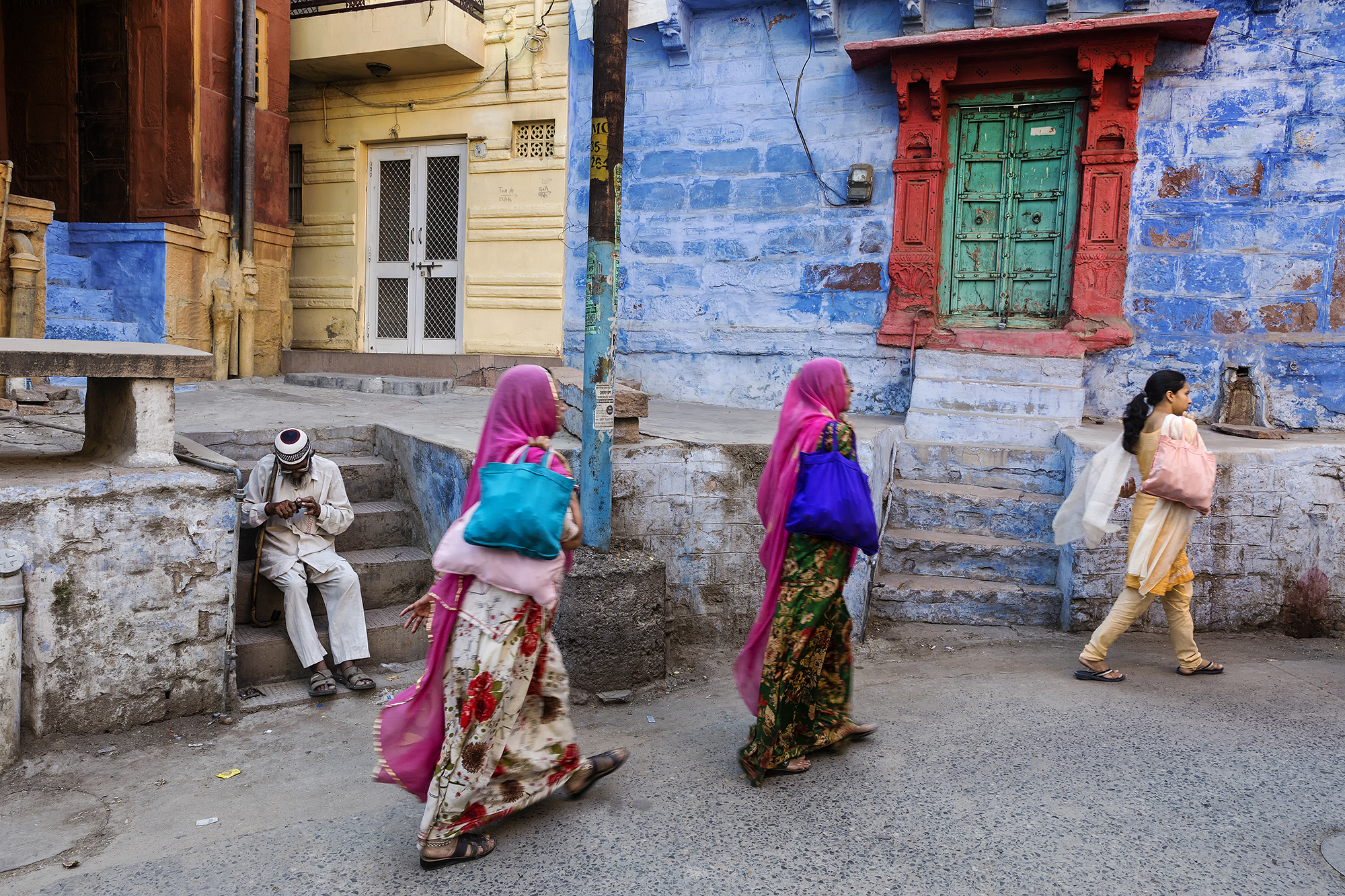

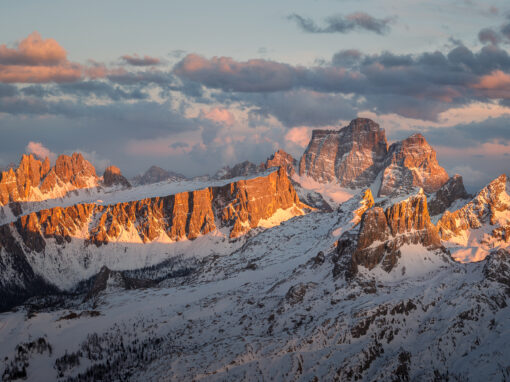
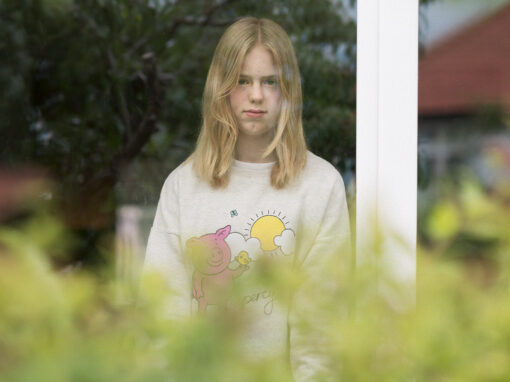
Fred Argue
June 14, 2021 at 16:18
Rob, you always leave me with the same question, “Are you a better author or photographer?” Has anyone figured this out?
Robert Wilson
June 15, 2021 at 17:51
Thank you Fred!
charles blackhall
June 15, 2021 at 19:47
Good stuff! Street photography is a practise for me. Meaning it’s more the journey than the goal. Aimless wandering inevitable opens me up to that which is always there, but rarely noticed and even when noticed often self referenced, named, registered, conceptually known and nexted…I prefer the not knowing open quality of experience, that mode of curiosity, where coincidence, choreography, gestalt and the five senses mingle and play. Feels more like the world beckoning me to notice, a kind of invitation to join in an intervention of sorts. In the ongoing investigation of figure and ground, context is everything. The difference between the thing world and the perceptual world happens dramatically on the street. Something about this perception that allows art to emerge.
Robert Wilson
June 15, 2021 at 22:40
Thank you for your thoughts Charles!
Dr. Wilson Varghese
June 27, 2021 at 15:08
You are a compelling storyteller. So you surely are an amazing photographer as well. Warmest regards
Robert Wilson
June 28, 2021 at 13:53
Thank you so very much for you extremely kind words!
I really appreciate it.
All the best,
Rob